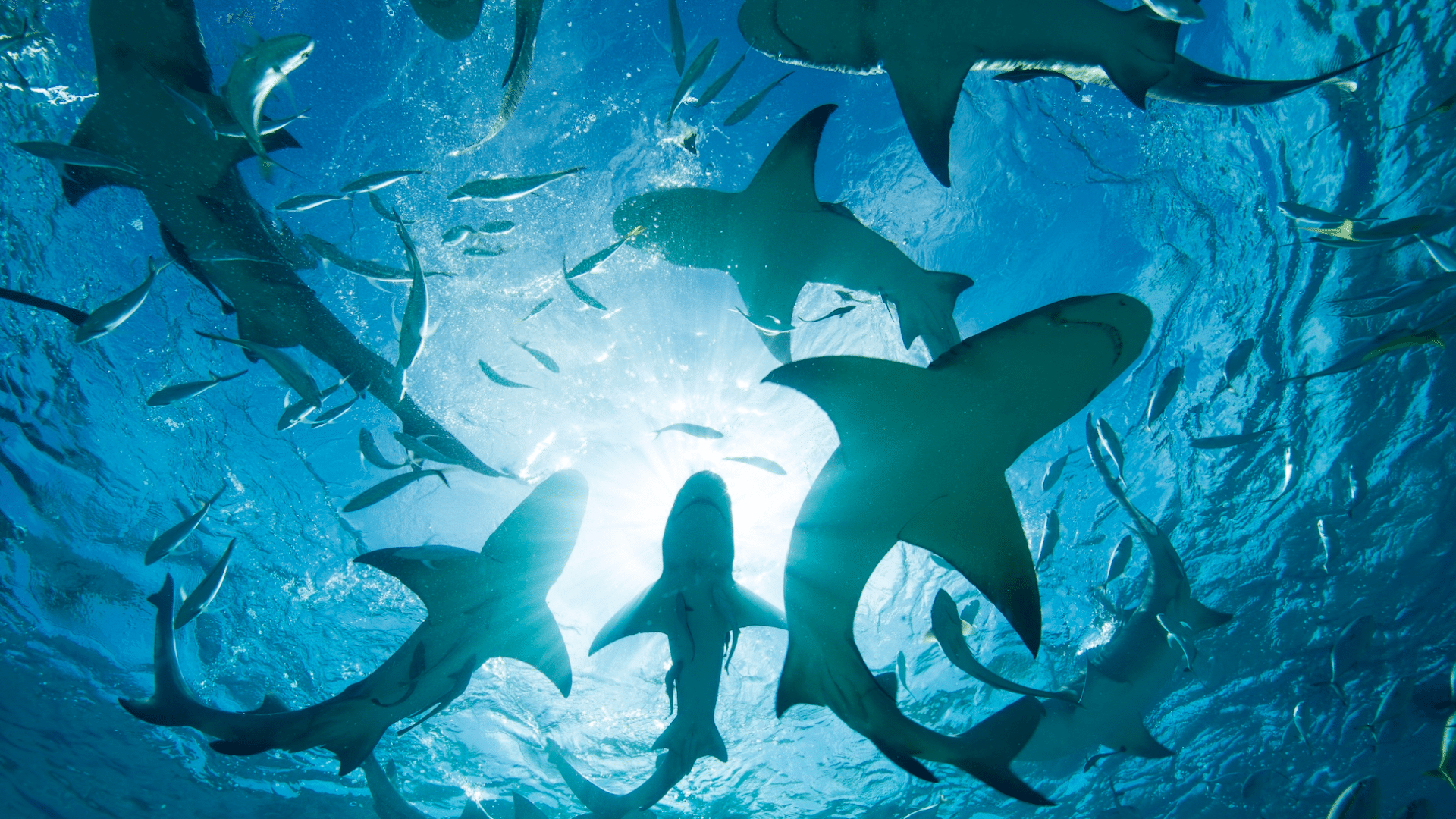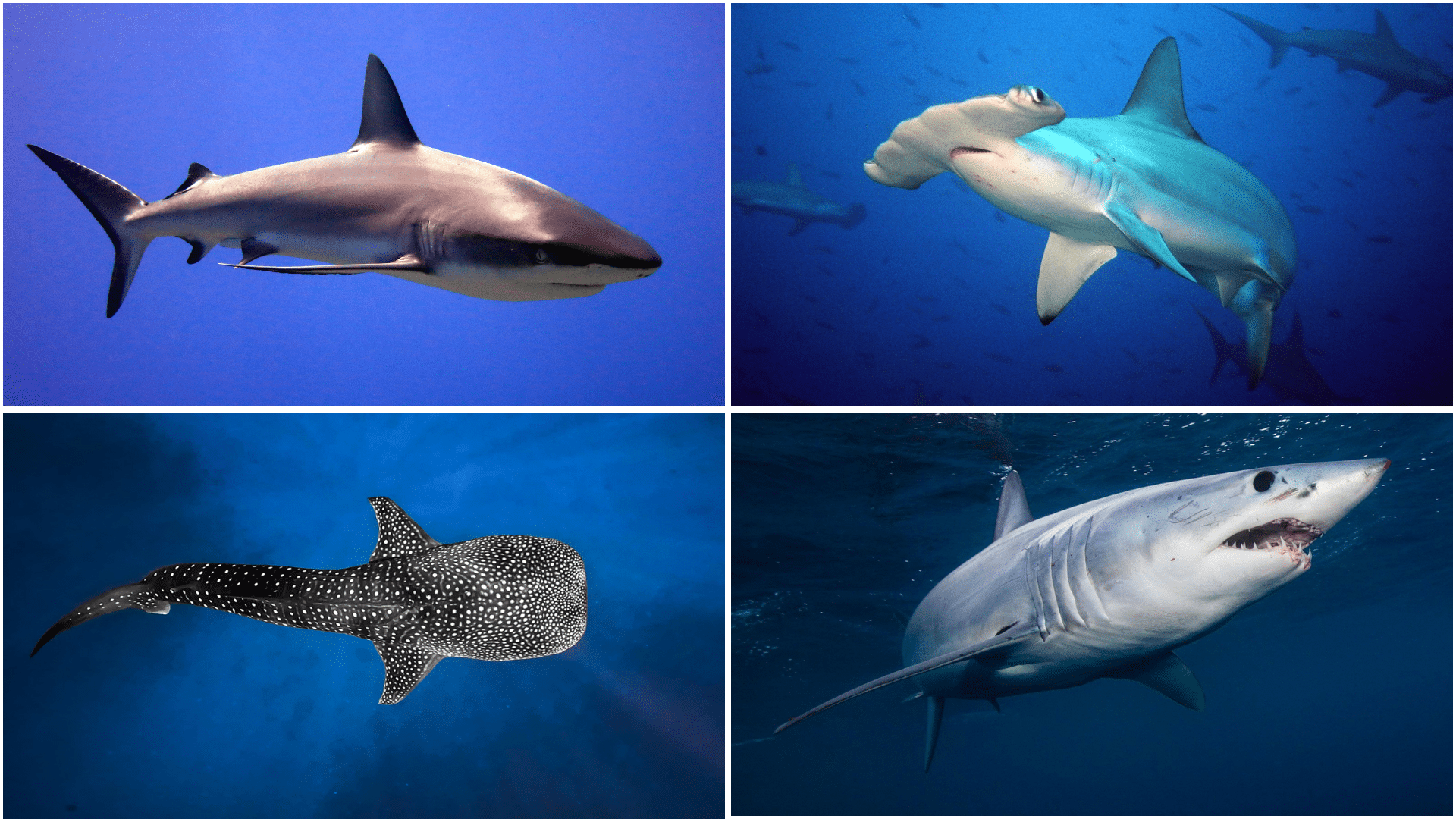Most people think they know sharks from movies and documentaries. But the truth is, these amazing creatures hold secrets that would surprise even marine biology fans.
This collection of cool shark facts will change how you see these ocean predators. You’ll learn things that most people never hear about.
From sharks that glow in the dark to species older than trees, this article covers the most interesting shark truths. You’ll find out about their incredible senses, surprising behaviors, and mind-blowing abilities. Some facts might even challenge what you thought you knew about these sea creatures.
Ready to see sharks in a completely new way? Let’s learn these amazing facts together.
Everything You Need to Know About Sharks

Sharks have ruled the oceans for over 400 million years. That makes them older than dinosaurs and trees. These incredible fish come in more than 500 species worldwide.
Most sharks are not dangerous to humans. Only about 12 species have ever attacked people. The majority eat fish, seals, and small sea creatures. Some giant species like whale sharks only eat tiny plankton.
Sharks have amazing senses. They can smell blood from miles away. Their skin feels like sandpaper because of tiny tooth-like scales. These scales help them swim faster through water.
Baby sharks are called pups. Some species lay eggs while others give birth to live babies. Sharks don’t have bones – their skeletons are made of cartilage, the same material in human noses and ears.
Before starting with the cool shark facts, if you like reading fun facts, you can check out our blog on Fun Facts About Butterflies That Will Blow Your Mind
Cool Shark Facts for Ocean Lovers

Sharks are one of the ocean’s most fascinating and ancient creatures, captivating humans with their power, adaptability, and unique biology.
The following are cool shark facts that reveal their incredible diversity, survival skills, and role in marine ecosystems.
1. Sharks Have Existed for Over 400 Million Years
Sharks first appeared roughly 400 million years ago, long before dinosaurs roamed the Earth, making them one of the oldest living species. Their ability to adapt to various oceanic changes has allowed them to survive multiple mass extinction events through time.
2. Sharks Can Detect Electrical Fields
Sharks possess special sensory organs called the ampullae of Lorenzini, which allow them to detect electric fields emitted by other animals. This ability helps them locate prey hidden under sand or murky water, enhancing their hunting efficiency even in tough conditions.
3. Not All Sharks Have Teeth
Some species, such as the basking shark and megamouth shark, have tiny, ineffective teeth. These sharks are filter feeders, swallowing large amounts of plankton and small fish instead of hunting with teeth, demonstrating the diversity of shark feeding strategies.
4. Shark Skin Is Covered in Dermal Denticles
Shark skin isn’t smooth; it’s covered in tiny, tooth-like structures called dermal denticles. These reduce friction and prevent parasites from attaching, enabling sharks to swim faster and more quietly, an evolutionary advantage during hunting or escaping predators.
5. Great White Sharks Can Reach Speeds of 25 mph
Despite their large size, great white sharks can swim up to 25 miles per hour in short bursts. This speed allows them to swiftly attack prey, especially during breaching hunting behavior, where they launch themselves out of the water to catch seals.
6. Sharks Continuously Grow New Teeth
Sharks lose and replace thousands of teeth over their lifetime. Their teeth grow in multiple rows, with older teeth falling out when damaged, and new ones moving forward in succession, ensuring they always have sharp weapons for capturing prey.
7. Whale Sharks Are the Largest Shark Species
The whale shark can grow up to 60 feet long, making it the largest shark and fish in the world. Despite their enormous size, whale sharks are gentle giants that feed primarily on plankton using filter-feeding techniques.
8. Some Sharks Can Live for More Than 100 Years
The Greenland shark holds the record for longevity among sharks, potentially living up to 400 years. This slow-growing species inhabits cold Arctic waters, contributing to its extended lifespan and making it one of the longest-living vertebrates on Earth.
9. Sharks Have Multiple Rows of Teeth
Most sharks have several rows of teeth, not just one, which allows them to replace broken or lost teeth quickly. This dental conveyor belt system ensures they remain effective predators throughout their lives without losing their ability to catch food.
10. Some Sharks Give Birth to Live Young
Unlike many fish, some shark species are viviparous, meaning they give birth to live pups. This reproductive strategy increases offspring survival, as newborn sharks are more developed and capable of independent survival after birth.
11. The Hammerhead Shark’s Head Improves Sensory Perception
The hammerhead’s uniquely shaped head improves its ability to detect electrical signals from prey. The wide-set eyes also provide excellent binocular vision and depth perception, making hammerheads effective hunters in coastal waters worldwide.
12. Sharks Have Cartilaginous Skeletons
Instead of bones, sharks’ skeletons are made of cartilage, which is lighter and more flexible. This adaptation allows sharks to be agile swimmers while reducing their overall body weight, giving them significant advantages in speed and maneuverability.
13. Some Sharks Can Detect One Drop of Blood in an Olympic-Sized Pool
Sharks have an incredibly acute sense of smell, capable of detecting tiny amounts of blood from miles away. This sensitivity attracts them to injured prey or potential food sources and plays an essential role in their survival as efficient hunters.
14. Shark Reproductive Cycles Can Be Lengthy
Some shark species have long gestation periods, with the frilled shark’s pregnancy lasting up to 3.5 years. This extended reproductive cycle means sharks produce fewer offspring, making their populations more vulnerable to environmental threats.
15. Sharks Have Vestibular Systems to Help with Balance
Sharks possess inner ear structures that assist with balance and spatial orientation. This vestibular system enables precise control during swimming and hunting, helping sharks perform quick turns and sudden movements needed to capture agile prey.
16. Sharks Are Found in All Oceans and Depths
Sharks inhabit all major oceans worldwide, from shallow coastal reefs to deep ocean trenches over 2 miles below the surface. Their adaptability to various marine environments showcases their evolutionary success and ecological versatility.
17. The Whale Shark Has Over 300 Rows of Teeth
Although whale sharks have tiny, non-functional teeth, they possess more than 300 rows. These teeth are vestigial, reflecting their evolutionary history but no longer serving a role in feeding, which relies mainly on filter-feeding through their large mouths.
18. Sharks Can Go Into a Resting State Without Moving
Unlike some fish, certain shark species can enter a restful sleep state while still swimming slowly. This “yo-yo swimming” behavior allows them to maintain the flow of water over their gills for respiration while resting their brains during inactive periods.
19. Dolphins and Sharks Sometimes Interact in Unique Ways
While sharks are predators, they sometimes interact sympatrically with dolphins. Dolphins may use their intelligence and agility to protect themselves or drive sharks away from their groups, illustrating complex interspecies behaviors in marine ecosystems.
20. Sharks Have Immune Systems That Resist Disease
Sharks possess a highly effective immune system that helps prevent infections and diseases, partially attributed to their cartilage composition. This resilient immune response is of great interest to scientists researching human medicine and cancer treatments.
21. The Shortfin Mako Shark Is the Fastest
The shortfin mako can swim up to 45 miles per hour, making it the fastest shark species. This speed, combined with its strength and agility, allows it to hunt quick prey like tuna and swordfish in open oceans.
22. Sharks Do Not Have Swim Bladders
Unlike most fish, sharks lack swim bladders for buoyancy. Instead, their large livers filled with oil reduce density and help maintain buoyancy, an evolutionary adaptation preventing them from sinking and allowing continuous movement.
23. The Cookiecutter Shark Leaves Circular Bite Marks
The cookiecutter shark feeds by taking round plugs of flesh from larger animals, leaving distinctive cookie-shaped wounds. This unique feeding method allows it to parasitize bigger species, such as whales and submarines, without killing them outright.
24. Some Sharks Can Change Color
Certain shark species, like the carpet shark, can change their skin color to blend with their surroundings. This camouflage helps them avoid predators and sneak up on prey, an effective defense and hunting strategy in complex seafloor habitats.
25. Sharks Use Their Senses to Navigate Migration Routes
Sharks rely on senses such as smell, the ampullae of Lorenzini, and the Earth’s magnetic fields to navigate long migration routes. These capabilities enable species like the great white to travel thousands of miles across oceans for feeding and breeding.
26. Sharks Have No Bones to Break
Because sharks’ skeletons are made purely of flexible cartilage, they are less prone to fractures. This structural difference aids in surviving physical impacts or attacks, allowing them to continue functioning effectively even after collisions.
27. The Goblin Shark Has a Distinctive Jaw
The goblin shark’s jaw can rapidly extend forward to catch prey with a snap. This unique adaptation allows it to capture fast-moving prey in deep-sea environments where encounters are rare, showcasing specialized hunting techniques.
28. Shark Meat Is Eaten in Many Cultures
In various parts of the world, shark meat is a traditional food source. It is prepared in multiple ways, including smoked, dried, or fresh, and is considered a delicacy or staple protein, highlighting humans’ diverse use of marine resources.
29. Sharks Play a Key Role in Marine Ecosystems
As apex predators, sharks regulate prey populations and maintain the balance of marine ecosystems. This ecological role helps sustain healthy ocean environments by preventing overpopulation of species and promoting biodiversity.
30. The Thresher Shark Uses Its Tail to Hunt
The thresher shark has an exceptionally long, whip-like tail, which it uses to stun prey. By slapping the water with its tail, it can disorient schools of fish, making them easier to catch, demonstrating an inventive hunting adaptation.
31. Sharks Have Unique Skin Patterns
Many shark species have distinct skin markings or patterns used for identification. These markings aid researchers in studying shark populations through non-invasive photo identification, contributing to conservation efforts and understanding of their behaviors.
32. Some Sharks Are Bioluminescent
Certain deep-sea sharks have bioluminescent organs that produce light. These glowing features can serve as camouflage, attract prey, or help sharks communicate in the dark depths where sunlight does not penetrate.
33. Shark Cartilage Is Used in Medicine
Shark cartilage has been studied for its potential medicinal properties, particularly in cancer research. While some claims are unproven, compounds found in shark cartilage have shown promise for anti-angiogenic effects, inhibiting blood vessel growth in tumors.
34. Sharks Can Sense Vibrations Through Their Lateral Line
The lateral line is a sensory organ running along sharks’ sides that detects vibrations and movements in water. This sense increases their ability to find prey, avoid predators, and navigate their environment even in low visibility.
35. Great Hammerhead Sharks Are the Largest Hammerheads
Among hammerhead species, the great hammerhead can grow up to 20 feet long, making it the largest. These sharks tend to inhabit warm, tropical waters and have a solitary nature, playing a significant role in coastal marine ecosystems.
36. The Spiny Dogfish Can Live for 100 Years
The spiny dogfish has an unusually long lifespan for a small shark, reaching up to a century. Its slow growth and late maturity make it vulnerable to overfishing, emphasizing the need for careful fisheries management.
37. Shark Teeth Fossils Are Used to Date Geological Layers
Fossilized shark teeth are abundant and durable, helping scientists date geological strata. Since teeth evolve rapidly and are found worldwide, they serve as important tools in paleontology and stratigraphic studies.
38. Sharks Can Detect Water Pressure Changes
Sharks use their lateral line and other sensory systems to sense subtle changes in water pressure. This ability helps them detect movements of prey or nearby objects and avoid obstacles in their environment, enhancing their survival.
39. The Zebra Shark Has a Unique Spot Pattern
The zebra shark’s juvenile striped pattern changes to spots as it matures. This transformation helps juveniles camouflage in different habitats while adults blend into sandy or rocky bottoms, reflecting an adaptive visual strategy.
40. Sharks Have Been Featured in Human Culture for Thousands of Years
Sharks appear in myths, art, and folklore across many cultures, often symbolizing power and ferocity. Indigenous peoples, coastal communities, and modern media all reflect humanity’s complex relationship with these marine predators.
41. Some Sharks Can Perform Blind Bites
Sharks sometimes bite prey without seeing it, relying instead on their electroreception and smell. This blind biting is common during nocturnal hunts or when chasing prey that hides in sediment or darkness, showing sensory adaptation beyond vision.
42. Sharks Have Huge Drinking Needs
Despite living in saltwater, sharks must regulate their internal salt balance. They drink seawater in controlled amounts and retain urea in their tissues to maintain osmotic balance, an important physiological adaptation for marine life.
43. The Blue Shark Has Long, Pectinated Teeth
Blue sharks have distinctive teeth with serrated edges, perfect for slicing through soft-bodied prey such as squid and fish. Their streamlined body and hunting style make them efficient and widespread predators in temperate and tropical waters.
44. Some Sharks Can Survive in Freshwater
Bull sharks are known to tolerate freshwater and can travel far up rivers and lakes. This ability to osmoregulate allows them to exploit environments inaccessible to most other shark species, demonstrating remarkable physiological flexibility.
45. Sharks Are Sensitive to Water Temperature Changes
Many shark species migrate seasonally to stay within preferred temperature ranges. These migrations ensure access to suitable prey and breeding grounds, highlighting sharks’ sensitivity and adaptability to changing environmental conditions.
46. Sharks Have One of the Fastest Bite Forces
Great white sharks possess incredibly powerful bite forces, comparable to some of the strongest terrestrial predators. This force allows them to penetrate the tough hides and bones of seals and other prey, proving essential in their role as top predators.
47. Sharks Use Social Behavior to Hunt
Some species, such as blacktip reef sharks, display cooperative hunting behaviors. By working together to herd fish or hunt strategically, these social interactions improve hunting success and reveal complex behavioral adaptations among sharks
Why Sharks Matter More Than Ever
Sharks face more threats today than ever before in their 400-million-year history. Many people don’t realize how important these predators are to our planet’s health.
The following are why sharks matter more now:
- Ocean Balance Keepers: Sharks control fish populations by eating sick and weak animals. This keeps marine ecosystems healthy and strong.
- Carbon Storage Helpers: Healthy shark populations help oceans store carbon dioxide. This fights climate change in ways scientists are still learning about.
- Fishing Industry Support: Areas with more sharks have better fish catches. Sharks create balance that helps commercial fishing stay profitable.
- Medical Breakthroughs: Shark antibodies and healing abilities inspire new medicines. Their unique biology could help cure human diseases.
- Tourism Economy Boost: Shark diving brings billions of dollars to coastal communities. Live sharks are worth more than dead ones.
- Food Chain Stability: Without sharks, prey fish populations explode. This crashes into other marine life and damages coral reefs.
- Ocean Health Indicators: Healthy shark numbers show healthy oceans. They’re like canaries in coal mines for marine environments
Wrapping It Up
These cool shark facts show just how remarkable these ocean giants are.
From their ancient origins to their modern-day challenges, sharks continue to amaze us with abilities we’re still learning about.
Next time you hear someone say sharks are just mindless killers, you can share what you’ve learned. These creatures are complex, intelligent, and vital to our oceans’ health.
The more we understand sharks, the better we can protect them. Every species lost makes our marine world a little less balanced. But there’s hope when people learn the truth about these incredible animals.
Share these facts with friends and family. Help spread the word that sharks deserve our respect, not our fear. Our oceans depend on it.


















